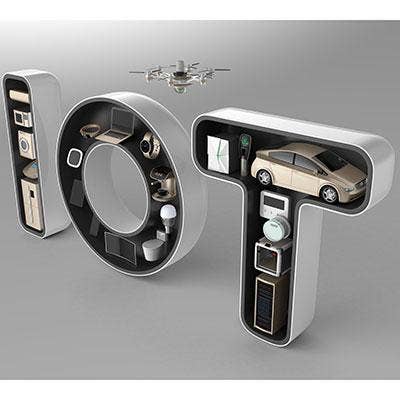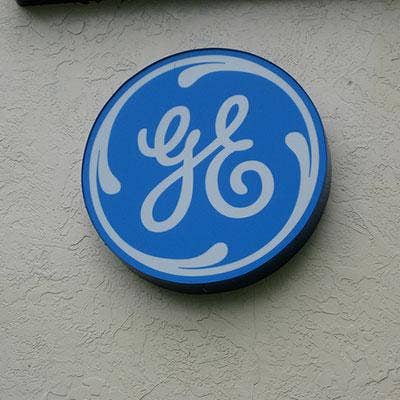IoT Channel Chronicles: Operational Technology Channel Partner Gray Matter Systems Tackles Industrial IoT

Industrial Market Opportunity
As more factory floors and utility companies are looking to cut costs, decrease downtime, and streamline their operations, they are looking for solution providers for consultant, implementation and managed services expertise.
The industrial market has completely different types of technology and control systems from more traditional enterprise IT – and that's why channel partners who specialize in operational technology (OT), like Gray Matter Systems, a Pittsburgh, Pa.-based solution provider, are perfect for the job.
Gray Matter Systems, founded in 1991, works with various customers to consult, plan and implement connectivity solutions.
"We work in the OT space, and our traditional market has been connecting people to their expensive assets - think of that as factories and plants," said CEO James Gillespie. Following are excerpts from an interview with Gillespie.

What kind of customers do you work with?
We do a lot of work in three vertical markets – all operational types of markets. These include the manufacturing industry, the water and wastewater treatment industry, and the energy markets – think oil and gas.
We help customers in these markets connect their factories, connect their big expensive assets. Those are things we've been working on, to digitize the information, provide better visibility and decision making, and to help customers get better results – more uptime, more throughput, more compliance with the EPA.

What types of operational services do you offer?
We think about services in four ways – we help customers think through their [operational] issues, so we do some consulting to help customers lay out a plan. We also help them with technology selection in this area – we're a pretty strong partner with GE on some of their technology, and re-use some of the things GE uses in some of the cases. We also have implementation folks, as well as designers; and then we'll help clients go live with managed services.

When you're working with customers, who are you talking to? Executives from the operational side, or more the IT side?
It sometimes depends on the market or the customer – I'm working with a mid-market manufacturing company now, like in the $1 billion to $2 billion revenue range, and with that company we're working with the CEO, the vice president of operations, and the VP of operational excellence. They're trying to figure out how to more efficiently make their product, how to get more throughput, how to get better quality out of their products – that's a food company as an example. In a big manufacturing company, we might work with someone in the CIO's organization that's responsible for operational systems, so they’ll call that the director of IT for manufacturing systems.

What are the top opportunities in the operational market for you as a solution provider?
I think there are two different opportunities. One is the IIoT. What that's enabling us to do is connect previously unconnected assets. Because the price point's coming down, we're doing that for manufacturers and water and oil and gas folks. So it's impacting what we used to do by democratizing the connectivity or bringing the price point down. But that's still internal and within customer's companies.
The other thing we're seeing a lot of adoption on is connecting the products that are going out to the customers. The manufacturers are starting to do that. For instance, maybe they're making a part of a bigger vehicle, like a truck. They have braking systems going into trucks, and they want to monitor the systems within fleets.
We've been working on those internal projects for 25 years, and the IoT heat up is causing those external projects to mature. So that's a new trend people are trying to figure out how to optimize those fleets of products out there as well as transforming their revenue models as an opportunity.

What types of systems are you connecting? Is security a concern for clients?
There's such a wide variety of technology out there – you'll have anything from a machine an executive bought last year, to things that are 50 years old and don't even have a serial port on them. The more connected everything is, the more you have to worry about locking it down. We see a lot of interest in the markets we play in to make sure the operational assets are protected from cyber [threats]. We've been called in to some major clients, and there's been way more vulnerabilities than management would have wanted there to be.
There's been so much spending on the pure IT side, that I think many clients have left the OT side for last, they haven't been as diligent. Look at the Target hack [of 2013], the hackers came through the HVAC system, which is really an OT system.
Even in hospitals, the MRI machines and other machines are analogous to machines in factories. They might be running Windows XP and they can't be upgraded because they're very specific for the job they're doing.

Talk about your partnership with GE Digital and what they have to offer.
We work with the GE Digital group, which is their technology and software business. They have a product called Predix, and that's the industrial operating system. Inside of that offering they have some modules, like Brilliant Manufacturing, which we use to help customers make their manufacturing facilities better. They have two other modules – an automation and asset performance management module – that we use as well.
I think for manufacturers, [GE Digital] is enabling digital transformations at a scale that would have been harder to do in the past. There's a community coming together – almost like the iTunes store, [Predix is like] the iOS of the operating systems and now there's people coming together to write apps – GE's got their own applications, now there's a whole group of people emerging in a community of developers and solution providers. We've been doing that for a long time already, but there's a bunch of attention coming into that space.

What kind of adoption of industrial IoT applications are you seeing in the operational space?
We saw first movers in this space, like Proctor & Gamble, move a few years ago – but it's starting to come into the early majority phase.
I think [this is due to] a handful of things – the democratization of connectivity, it's the cloud technology itself really being affordable, dependable and reachable, and it's these IIoT operating systems forming. It's not just the vendors and what they do, it’s the community around the operating system.